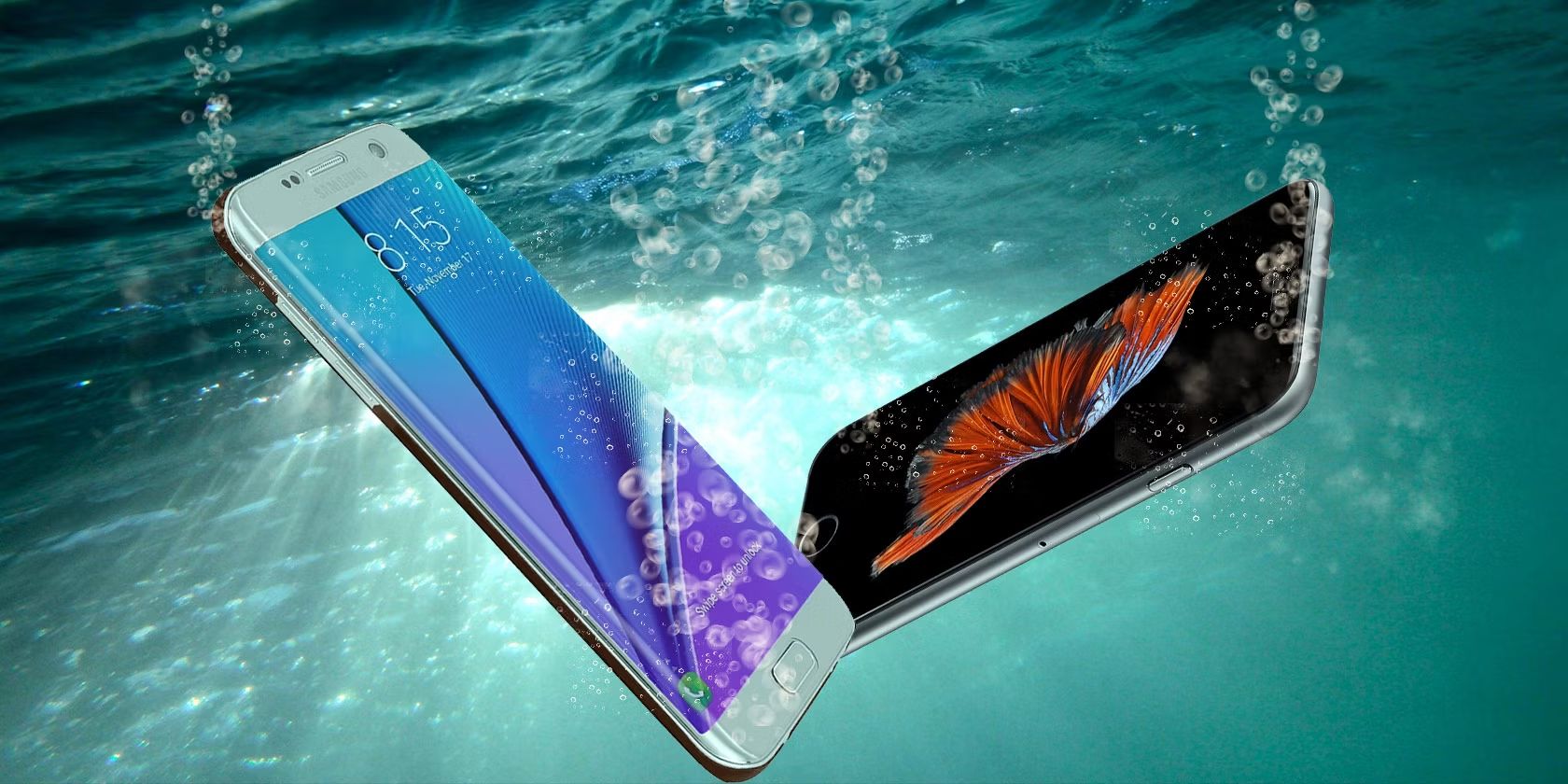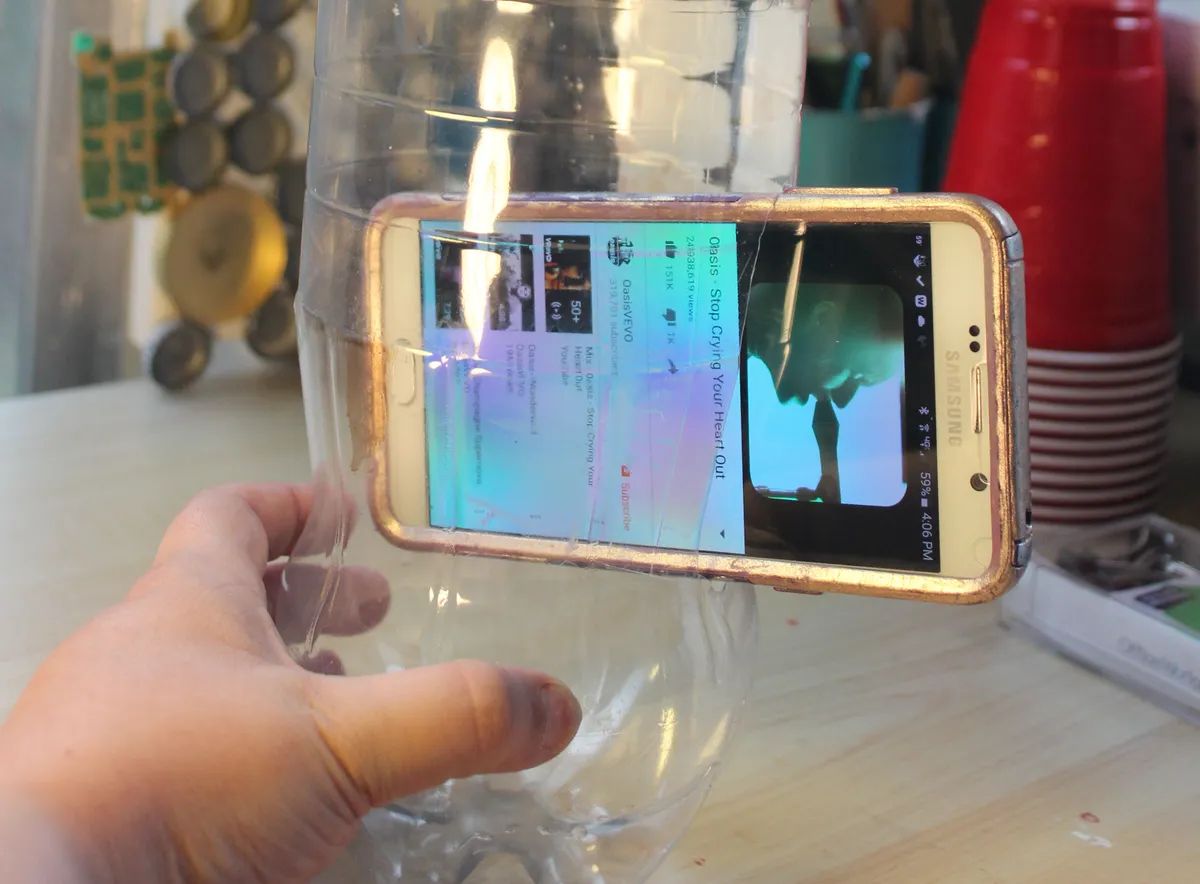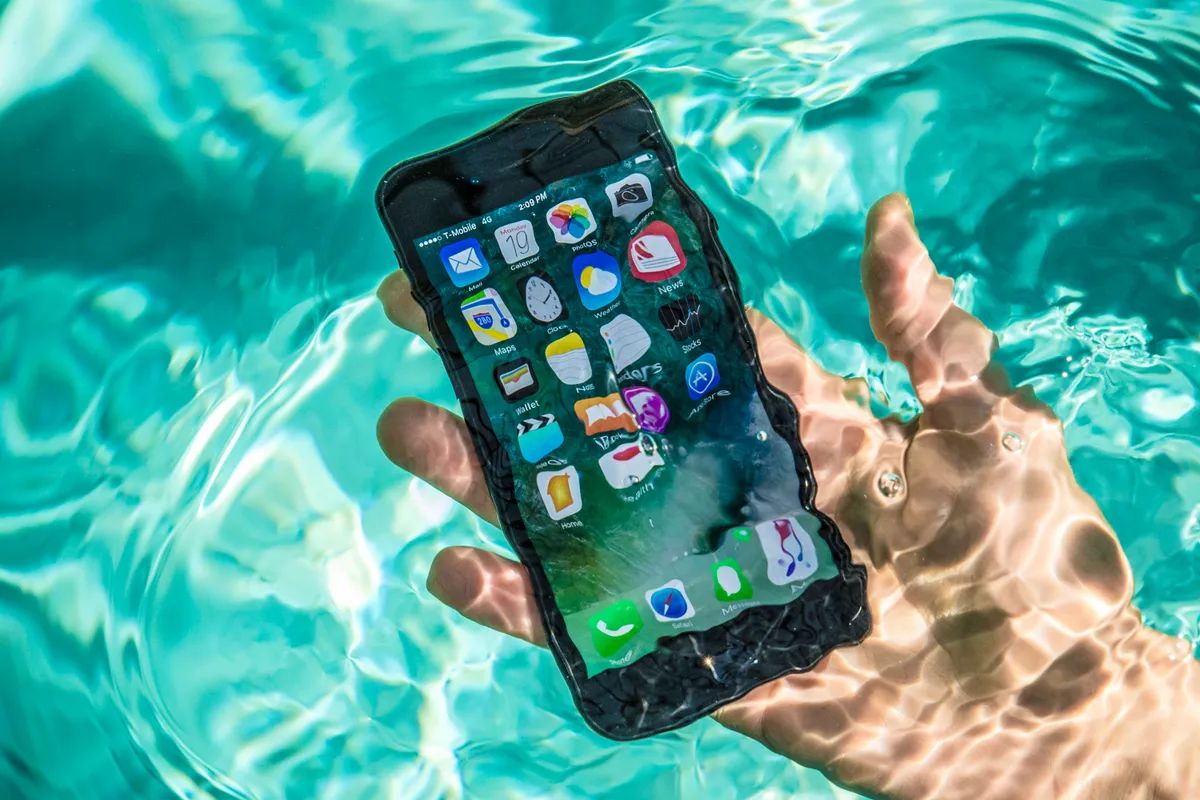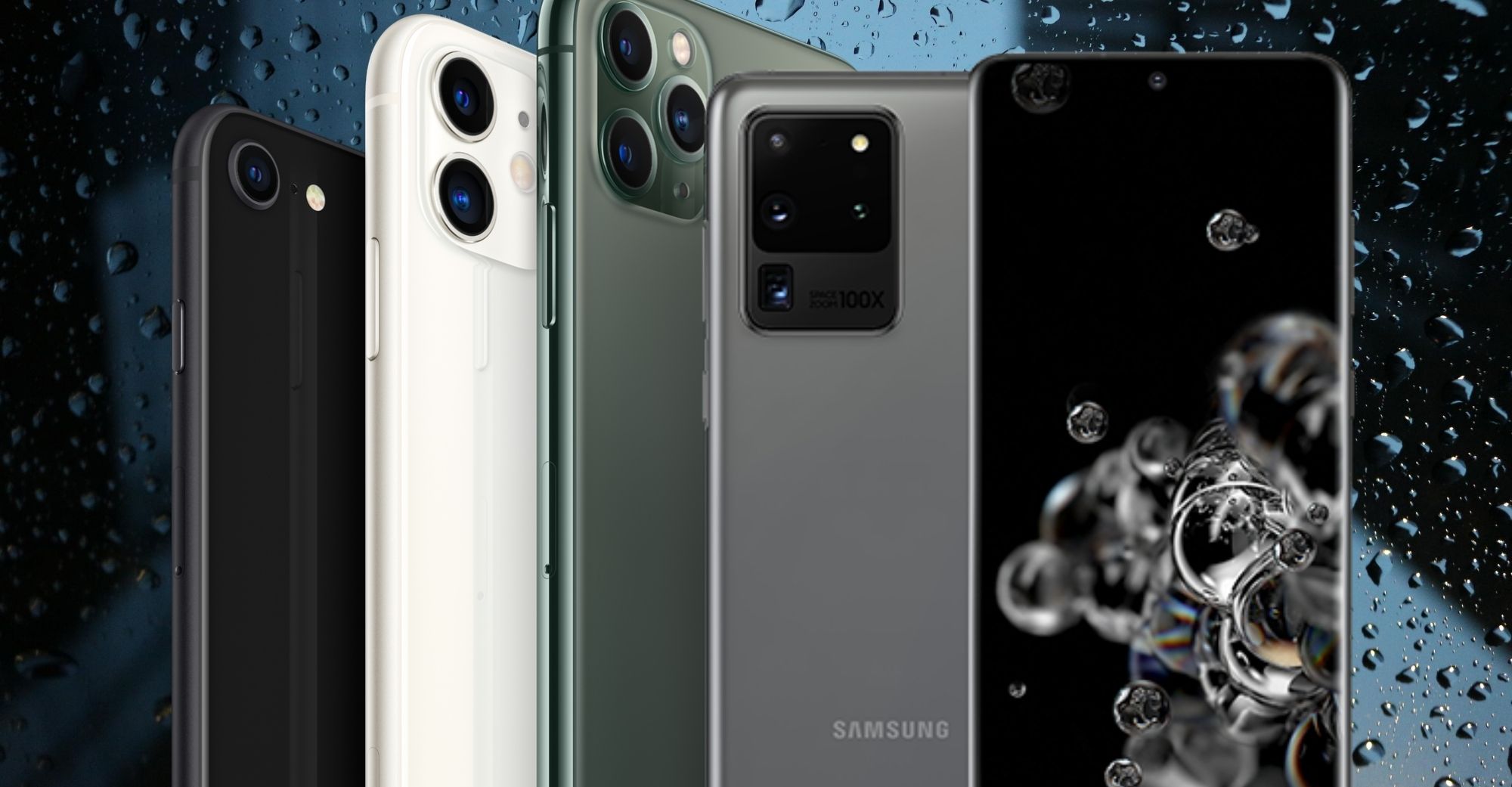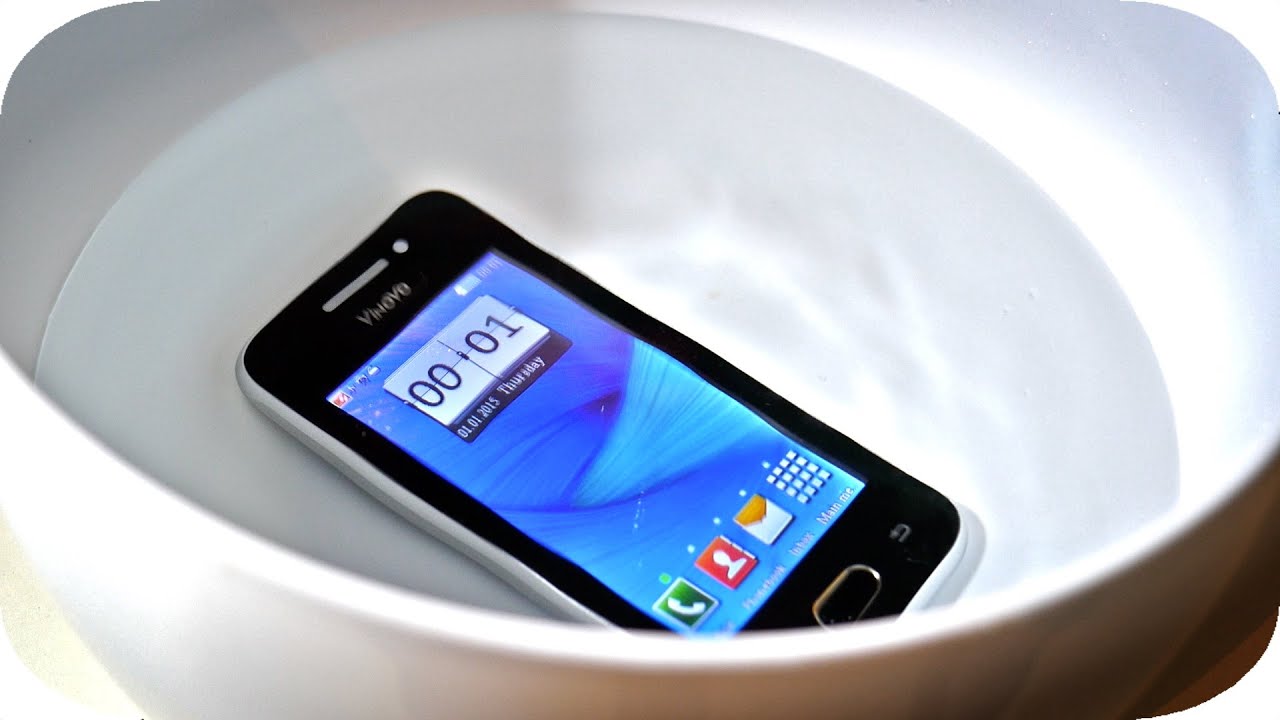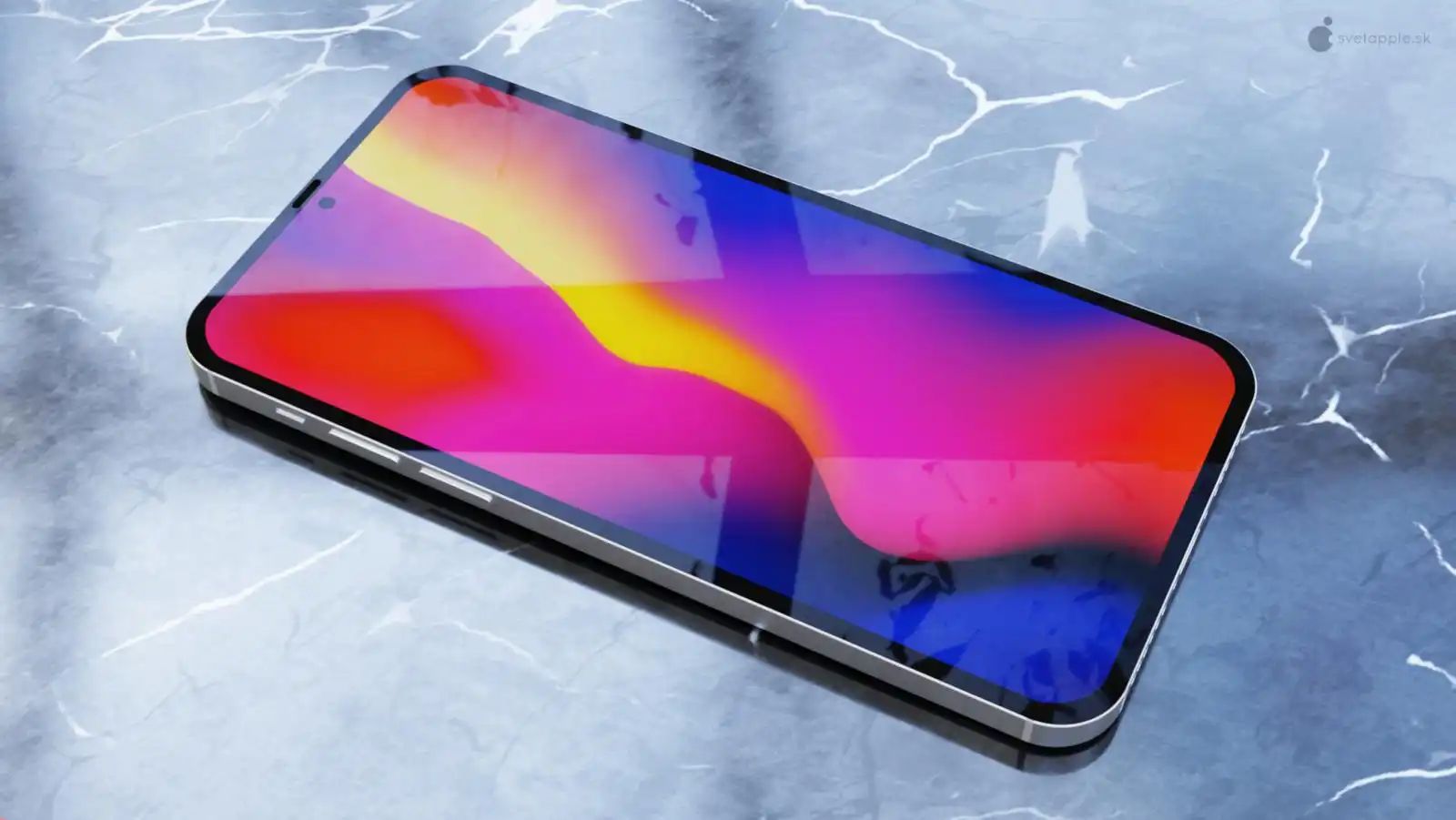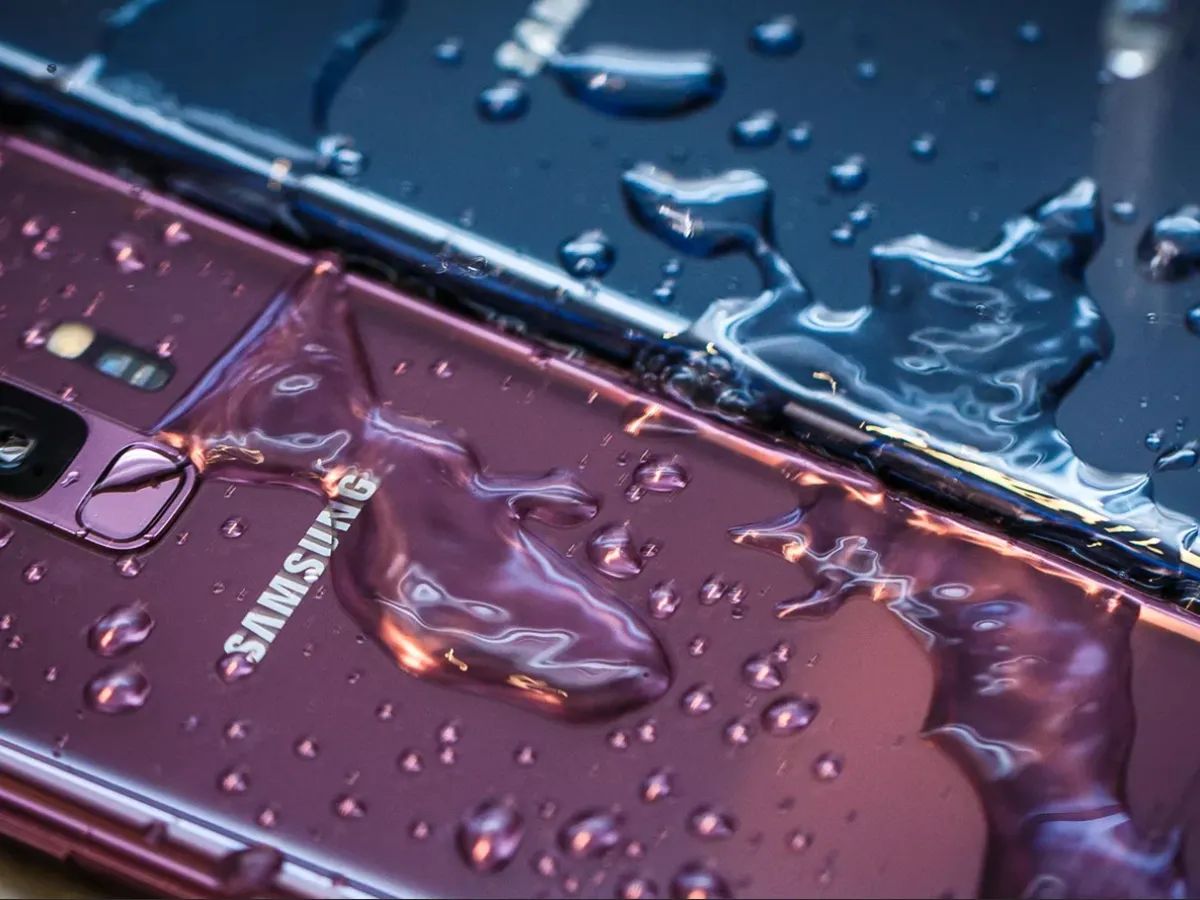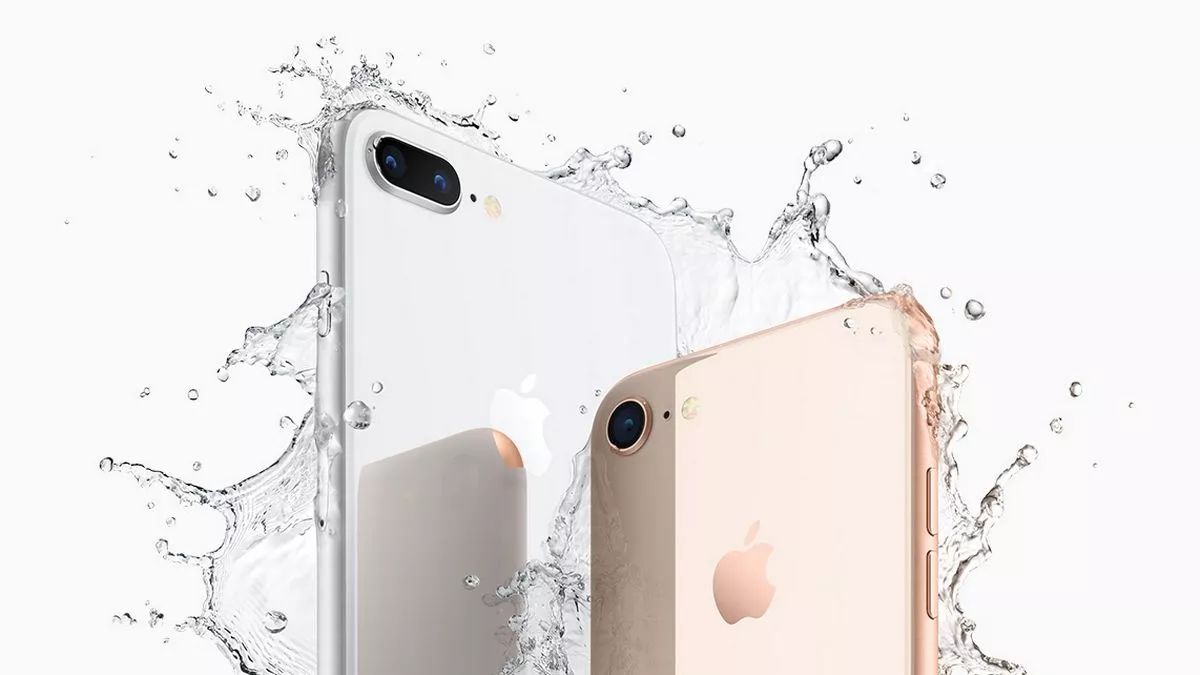Introduction
The advancement of technology has revolutionized the way we communicate, work, and entertain ourselves. One of the most significant innovations in recent years is the integration of waterproof coating in smartphones. This feature has redefined the durability and reliability of mobile devices, offering users peace of mind in various environments.
The integration of waterproof coating in smartphones has dramatically transformed the way we perceive and utilize these devices. Whether it's capturing precious moments by the pool, responding to urgent emails during a sudden downpour, or simply enjoying the convenience of using our phones without the fear of water damage, the significance of this technology cannot be overstated.
With the increasing reliance on smartphones for both personal and professional activities, the need for a robust and resilient design has become paramount. Waterproof coating has emerged as a game-changer in this regard, elevating the overall user experience and extending the longevity of these indispensable gadgets.
As we delve deeper into the functionality, benefits, and limitations of waterproof coating on phones, it becomes evident that this innovation has not only enhanced the physical attributes of smartphones but has also empowered users to explore and utilize their devices in a myriad of environments without compromising on performance or durability.
The Importance of Waterproof Coating on Phones
The integration of waterproof coating in smartphones has become a pivotal feature in the realm of mobile technology. This innovation holds immense significance for users across various demographics and lifestyles. The importance of waterproof coating on phones can be attributed to its ability to provide an added layer of protection against water damage, thereby enhancing the overall durability and reliability of these devices.
In today's fast-paced and dynamic world, smartphones have become indispensable tools for communication, productivity, and entertainment. Whether it's capturing memorable moments during outdoor activities, staying connected in challenging weather conditions, or simply safeguarding the device from accidental spills, the ability of smartphones to withstand exposure to water has become a crucial factor for consumers.
Moreover, the incorporation of waterproof coating has redefined the boundaries of smartphone usage, allowing individuals to explore and utilize their devices in environments that were previously considered off-limits. From beach vacations and poolside gatherings to adventurous outdoor expeditions, the assurance of water resistance empowers users to fully integrate their smartphones into diverse aspects of their lives without the constant worry of potential damage.
Furthermore, the importance of waterproof coating extends beyond personal convenience, as it also plays a significant role in enhancing the longevity and sustainability of smartphones. By minimizing the risk of water-related malfunctions and corrosion, this feature contributes to prolonging the lifespan of devices, reducing the frequency of repairs or replacements, and ultimately minimizing electronic waste.
In professional settings, the reliability of waterproof coating on phones is particularly valuable for individuals working in industries such as construction, outdoor recreation, and emergency services. The ability to rely on their smartphones in challenging and unpredictable environments enables these professionals to maintain seamless communication, access vital information, and execute their responsibilities with confidence.
In essence, the importance of waterproof coating on phones lies in its transformative impact on the way we perceive, utilize, and depend on these devices. By providing a safeguard against water damage and expanding the scope of smartphone usage, this feature has become a fundamental aspect of modern mobile technology, catering to the diverse needs and lifestyles of users worldwide.
How Waterproof Coating Works
Waterproof coating on phones functions as a protective barrier, effectively shielding the internal components from water infiltration. This innovative technology utilizes a specialized hydrophobic coating, which repels water and prevents it from permeating the intricate circuitry and sensitive electronic elements within the device.
The hydrophobic nature of the coating is achieved through the application of microscopic layers of water-repellent substances, such as nano-coatings or polymers, onto the surface of the phone. These layers form a cohesive and impermeable shield that actively resists the intrusion of water molecules, thereby safeguarding the internal components from potential damage.
When exposed to water, the hydrophobic properties of the coating come into play, causing the liquid to bead up and roll off the surface of the phone rather than adhering to it. This phenomenon effectively prevents the water from seeping into the device, ensuring that crucial components such as the motherboard, battery, and connectors remain insulated from moisture.
Moreover, the application of waterproof coating is meticulously engineered to maintain the functionality and usability of the phone. While offering robust protection against water, the coating is designed to be transparent and ultra-thin, preserving the tactile feel and visual clarity of the device without compromising its sleek design or user experience.
In essence, the functionality of waterproof coating on phones revolves around its ability to create a hydrophobic barrier that repels water and shields the internal components from potential damage. This innovative technology not only enhances the durability and reliability of smartphones but also empowers users to confidently utilize their devices in various environments without the constant concern of water-related harm.
Benefits of Waterproof Coating
The integration of waterproof coating in smartphones yields a multitude of compelling benefits that significantly enhance the user experience and the overall resilience of these devices. This transformative feature offers a host of advantages, ranging from practical utility to long-term sustainability, making it a pivotal asset for modern mobile technology.
1. Enhanced Durability and Reliability
The foremost benefit of waterproof coating is the bolstering of the device's durability and reliability. By effectively safeguarding the internal components from water damage, this feature ensures that smartphones can withstand exposure to moisture, accidental spills, and environmental elements without compromising their functionality. This heightened resilience translates into a longer lifespan for the device, reducing the likelihood of water-related malfunctions and the need for frequent repairs or replacements.
2. Expanded Usage Scenarios
The presence of waterproof coating expands the scope of usage scenarios for smartphones, empowering users to integrate their devices into various environments and activities previously deemed unsuitable or risky. Whether it's capturing photos and videos in aquatic settings, using the phone in rainy conditions, or simply enjoying peace of mind during water-based recreational activities, this feature eliminates the constraints imposed by water exposure, allowing users to fully embrace the versatility of their smartphones.
3. Protection Against Accidental Damage
Accidental exposure to water is a common concern for smartphone users, often leading to costly repairs or irreversible damage. Waterproof coating mitigates this risk by providing a protective barrier that repels water, thereby shielding the device from potential harm due to spills, splashes, or immersion in water. This benefit not only preserves the physical integrity of the phone but also alleviates the anxiety associated with accidental water exposure.
4. Seamless Integration into Active Lifestyles
For individuals with active lifestyles or professions that entail exposure to water or challenging environments, the presence of waterproof coating facilitates seamless integration of smartphones into their daily activities. Whether it's outdoor enthusiasts, athletes, or professionals working in demanding conditions, the assurance of water resistance enables uninterrupted usage of the device, ensuring constant connectivity and functionality without the need for excessive caution or protection.
5. Long-Term Sustainability and Environmental Impact
From a sustainability perspective, the implementation of waterproof coating contributes to the long-term viability of smartphones by reducing the frequency of device replacements and minimizing electronic waste. By enhancing the resilience of these devices and minimizing the impact of water-related damage, this feature aligns with sustainable practices and promotes the responsible utilization of electronic devices.
In summary, the benefits of waterproof coating on phones encompass a wide spectrum of advantages, encompassing durability, versatility, protection, and sustainability. This feature not only elevates the user experience but also reflects a proactive approach towards enhancing the resilience and longevity of smartphones in an increasingly dynamic and water-prone world.
Limitations of Waterproof Coating
While waterproof coating on phones offers remarkable advantages, it is essential to acknowledge its limitations to provide a comprehensive understanding of this technology. Despite its effectiveness in repelling water and protecting the internal components of smartphones, waterproof coating is not without constraints.
-
Degradation Over Time: Over prolonged usage, the effectiveness of waterproof coating may diminish. Continuous exposure to environmental factors, such as abrasion, heat, and chemicals, can gradually erode the hydrophobic properties of the coating, potentially compromising its water-repelling capabilities. As a result, the initial level of water resistance may diminish, necessitating caution and periodic assessment of the coating's integrity.
-
Limited Immersion Depth and Duration: While waterproof coating provides protection against incidental exposure to water, it is important to note that its effectiveness is typically limited to specific immersion depths and durations. Excessive or prolonged submersion in water, particularly under high pressure, can surpass the defensive capabilities of the coating, leading to potential water ingress and damage to the device. Therefore, users should exercise caution and adhere to recommended immersion guidelines to prevent compromising the device's water resistance.
-
Vulnerability to Physical Damage: The physical integrity of the waterproof coating can be susceptible to wear and tear, especially in scenarios where the phone is subjected to impact or abrasion. Scratches, dents, or cracks on the surface of the device may compromise the protective layer, potentially reducing its ability to repel water effectively. Therefore, maintaining the external condition of the phone is crucial in preserving the functionality of the waterproof coating.
-
Incompatibility with Certain Substances: Some chemical substances and solvents may have adverse effects on the hydrophobic properties of the coating. Exposure to harsh chemicals or cleaning agents can compromise the integrity of the protective layer, diminishing its ability to repel water. It is imperative for users to exercise caution when utilizing cleaning solutions or exposing the phone to potentially damaging substances to avoid compromising the waterproof capabilities of the coating.
-
Not a Guarantee Against All Forms of Damage: While waterproof coating provides a formidable defense against water-related damage, it is important to recognize that it does not offer comprehensive protection against all potential hazards. Factors such as dust, extreme temperatures, and physical trauma are outside the scope of waterproof coating's protective capabilities. Therefore, users should exercise holistic care and caution to ensure the overall resilience of their smartphones.
Understanding the limitations of waterproof coating is essential in maximizing its effectiveness and longevity. By acknowledging these constraints and adopting prudent usage practices, users can optimize the benefits of this technology while mitigating the potential challenges associated with its protective capabilities.
Maintenance and Care for Waterproof Coating
Proper maintenance and care are essential to preserve the effectiveness of the waterproof coating on phones and ensure long-term water resistance. By adhering to recommended practices, users can optimize the durability and protective capabilities of this innovative feature.
Regular Inspection and Cleaning
Periodic inspection of the phone's exterior, particularly the areas susceptible to water exposure, is crucial for detecting any signs of damage or wear on the waterproof coating. Users should examine the edges around ports, seams, and any potential entry points for water ingress. Additionally, gentle cleaning using a soft, damp cloth can help remove dirt, grime, and potential contaminants without compromising the integrity of the coating.
Avoiding Abrasive Contact
To maintain the effectiveness of the waterproof coating, it is imperative to minimize abrasive contact that may compromise its water-repelling properties. Users should avoid placing the phone on rough or abrasive surfaces, as well as refrain from using abrasive cleaning materials that could potentially damage the protective layer. Additionally, utilizing protective cases or covers can provide an extra layer of defense against physical wear and tear.
Gentle Handling During Water Exposure
While the waterproof coating offers significant protection, users should exercise caution and employ gentle handling practices when the phone is exposed to water. Avoid subjecting the device to excessive water pressure, such as high-velocity jets or strong water currents, as this may surpass the defensive capabilities of the coating. Furthermore, promptly drying the phone after water exposure can help maintain its water resistance by preventing prolonged moisture retention.
Minimizing Exposure to Harsh Substances
The integrity of the waterproof coating can be compromised by exposure to harsh chemicals, solvents, or cleaning agents. Users should refrain from using abrasive or corrosive substances when cleaning the phone, as these can erode the protective layer and diminish its water-repelling capabilities. Opting for mild, non-abrasive cleaning solutions and gentle cleaning techniques is essential to preserve the effectiveness of the coating.
Professional Assessment and Maintenance
In cases where the phone has been subjected to significant water exposure or shows signs of potential damage to the waterproof coating, seeking professional assessment and maintenance is advisable. Authorized service centers or technicians can conduct thorough inspections, identify any issues with the coating, and perform necessary repairs or reapplication of the protective layer to ensure continued water resistance.
By integrating these maintenance and care practices into their routine, users can prolong the effectiveness of the waterproof coating on their phones, thereby maximizing its protective benefits and contributing to the long-term resilience of their devices.
Conclusion
In conclusion, the integration of waterproof coating in smartphones represents a pivotal advancement in mobile technology, offering users a transformative blend of resilience, versatility, and peace of mind. This innovative feature has redefined the boundaries of smartphone usage, empowering individuals to seamlessly incorporate their devices into diverse environments without the constant concern of water-related damage. The importance of waterproof coating extends beyond mere convenience, permeating various aspects of personal and professional lifestyles, and contributing to the sustainability of electronic devices.
The functionality of waterproof coating, characterized by its hydrophobic properties and protective barrier, underscores its ability to repel water and safeguard the internal components of smartphones from potential harm. This technology has elevated the durability and reliability of mobile devices, ensuring that users can confidently utilize their phones in scenarios that were previously deemed risky or off-limits.
The benefits of waterproof coating span a spectrum of advantages, encompassing enhanced durability, expanded usage scenarios, protection against accidental damage, seamless integration into active lifestyles, and long-term sustainability. This feature not only fortifies the physical resilience of smartphones but also aligns with sustainable practices by reducing the frequency of device replacements and minimizing electronic waste.
However, it is essential to acknowledge the limitations of waterproof coating, including potential degradation over time, limited immersion depth and duration, vulnerability to physical damage, incompatibility with certain substances, and its inability to guarantee protection against all forms of damage. Understanding these constraints is vital in optimizing the effectiveness of the technology and promoting prudent usage practices among consumers.
Moreover, the maintenance and care of waterproof coating are paramount in preserving its water-repelling capabilities and ensuring prolonged effectiveness. By adhering to recommended practices, users can uphold the resilience of the coating and maximize its protective benefits, thereby contributing to the prolonged sustainability of their smartphones.
In essence, the integration of waterproof coating in smartphones represents a significant leap forward in enhancing the resilience, reliability, and adaptability of these devices. This technology not only enriches the user experience but also reflects a proactive approach towards mitigating water-related damage and promoting the sustainable utilization of electronic devices in an increasingly dynamic and water-prone world.







